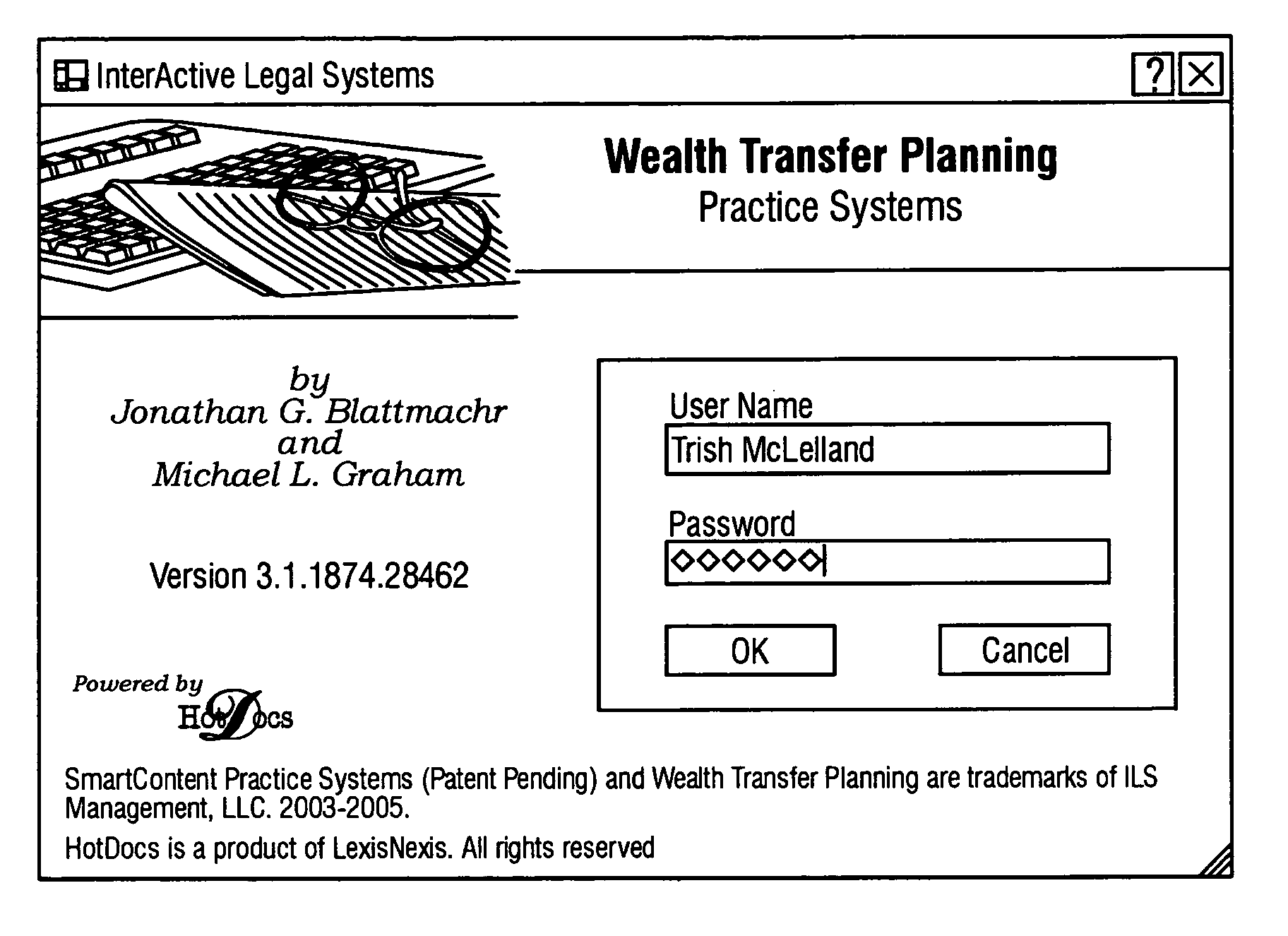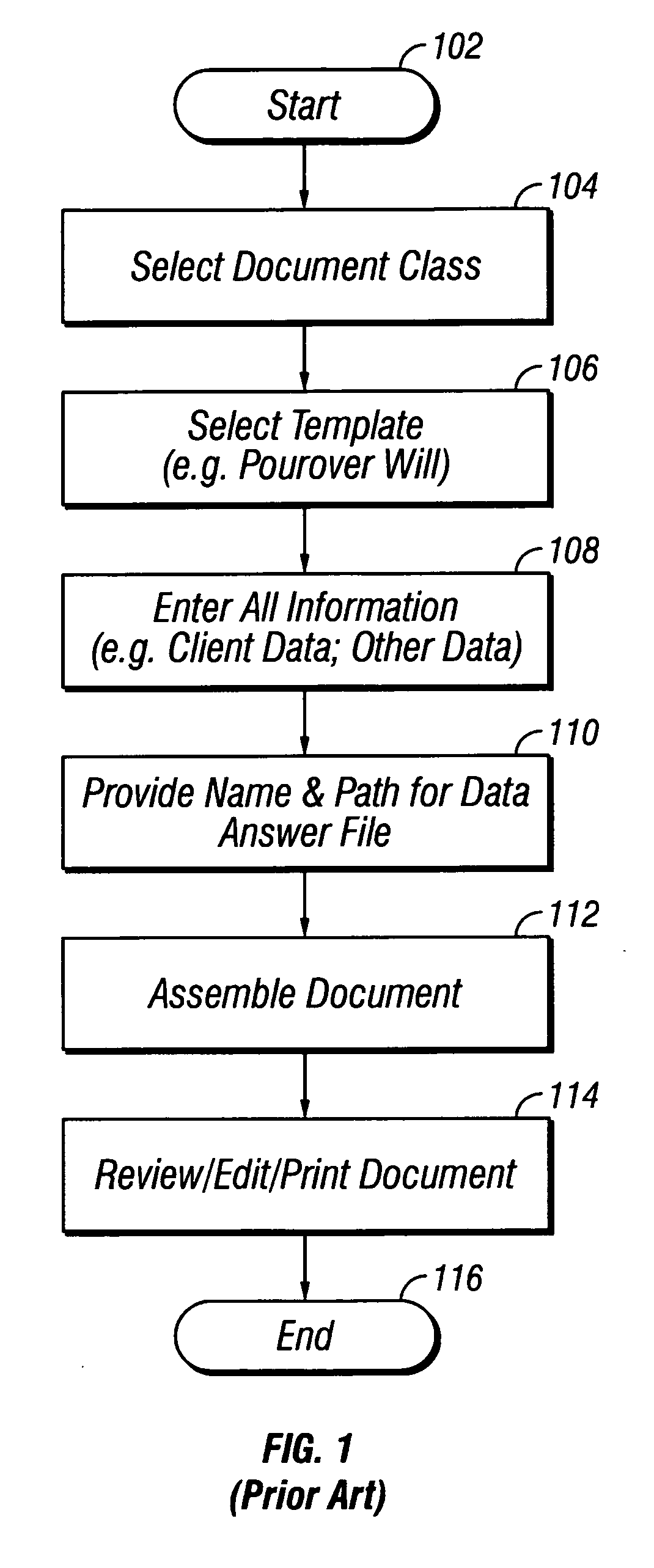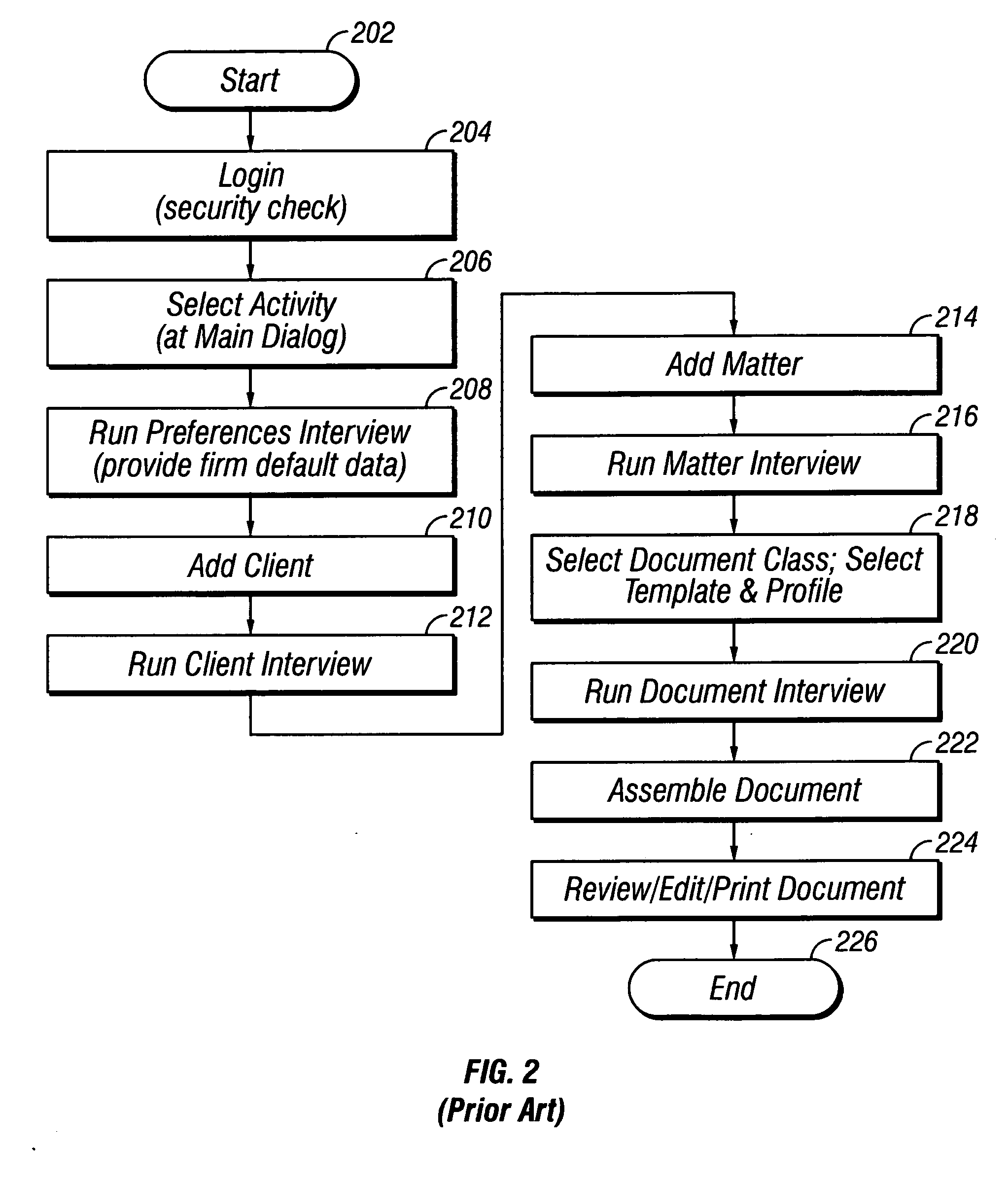Client centric document preparation interface
a document preparation and client technology, applied in the field of system and method of managing the workflow, can solve the problems of inefficient order of adding information, no efficient mechanism for creating reciprocal or “mirror images", and inconvenient use of existing client information, so as to efficiently combine and re-use information and efficiently use existing client information
- Summary
- Abstract
- Description
- Claims
- Application Information
AI Technical Summary
Benefits of technology
Problems solved by technology
Method used
Image
Examples
Embodiment Construction
[0043] While the invention is described below with respect to a preferred embodiment, other embodiments are possible. The concepts disclosed herein apply equally to other systems and methods which gather and organize client information, and assemble documents in a client centric fashion. Furthermore, the concepts applied herein apply more generally to the management and use of client information. The invention is described below with reference to the accompanying figures.
DEFINITIONS
[0044] A template as used herein, is defined as a generic document preferably having form fields such that specific information can be placed therein. Templates are generic in that no client specific data is included, but text common to any similar document is included. Templates can also include sample or instructional text (e.g., ). Throughout this document, text within angled brackets (“”) is user defined, and the exact content of such text is immaterial to the functioning of the invention. Preferabl...
PUM
 Login to View More
Login to View More Abstract
Description
Claims
Application Information
 Login to View More
Login to View More - R&D
- Intellectual Property
- Life Sciences
- Materials
- Tech Scout
- Unparalleled Data Quality
- Higher Quality Content
- 60% Fewer Hallucinations
Browse by: Latest US Patents, China's latest patents, Technical Efficacy Thesaurus, Application Domain, Technology Topic, Popular Technical Reports.
© 2025 PatSnap. All rights reserved.Legal|Privacy policy|Modern Slavery Act Transparency Statement|Sitemap|About US| Contact US: help@patsnap.com



